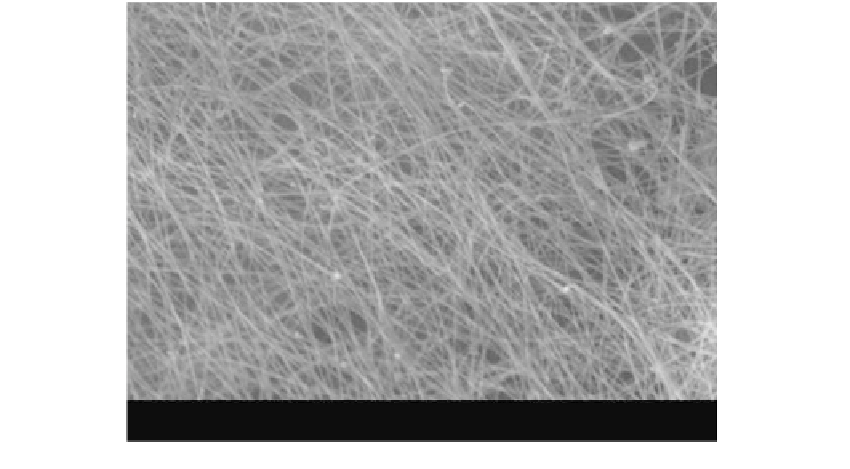Biomedical Engineering Reference
In-Depth Information
7.1.2
Nanotubes
There is a great deal of interest in both multiwalled and single-walled carbon nanotubes
(CNTs) for biosensors. Figure 7.3 illustrates the structure of carbon nanotubes.
The main advantages of CNTs are the high surface area to volume ratio, very high elec-
trical conductivity and mechanical strength. The high surface area allows the possibility of
increased biomolecular packing density on the biosensor surface. Only two recent exam-
ples are discussed here as this aspect is dealt with in greater detail elsewhere in the text.
Li et al. (5) have described multiwalled carbon nanotubes (MWCNT) containing
covalently linked glucose oxidase (GOD) with high-function density for use as a biosens-
ing interface. The GOD-MWCNT composites were found to be highly water soluble.
Electrochemical characterization of the GOD-MWCNT composites that were modified on
a glassy carbon electrode shows that the covalently linked GOD retained its bioactivity for
the oxidation of glucose. The biosensor response was linear up to 40 mM and had a
minimum detection limit of 30 µM. Huang et al. (6) describe an alternative technique to
functionalize CNTs for biosensor applications. They utilized electroactive and photoactive
thionine for cross-linking to self-assembled multilayers containing CNTs via the alternate
layer deposition technique. The resulting multilayer system was found to electrocatalyze
the oxidation of NADH.
Gold surfaces have also been extensively applied in biosensor design such as for surface
assembled monolayers. Recently the production of gold nanotubes has been reported.
Barreca et al. (7) have produced hollow 1-D gold nanostructures with controlled
morphology by RF-sputtering of gold into porous polycarbonate or polyester scaffolds at
low temperatures. The scaffolds were removed by a postsynthesis membrane etching by
oxygen plasmas or in solution. This allowed the preparation of freestanding Au nan-
otubes, which maintained the original morphology.
Nanostructured titanium dioxide (TiO
2
) nanotubes have been reported, which can be
prepared by anodizing titanium in a hydrofluoric acid aqueous solution (8). The materials
are nontoxic and have good biocompatibility. In the recent study (8), TiO
2
nanotubes were
SE
27
−
May
−
05
827
WD 6.2 mm 5.00 kv
x10k
5
µ
m
FIGURE 7.3
Illustration of carbon-nanotubes prepared by the chemical vapor deposition method.



